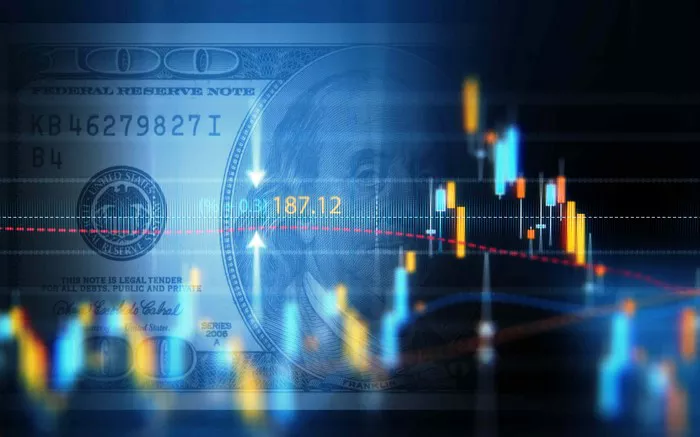The foreign exchange (Forex) market is one of the largest financial markets in the world, with daily trading volumes exceeding trillions of dollars. It operates 24 hours a day and allows participants to trade currencies. Forex trading involves two primary actions: buying and selling. These actions might seem straightforward, but understanding their implications is critical for anyone venturing into this dynamic market.
Buying and selling in Forex have distinct roles, strategies, and outcomes. Knowing the difference is essential for navigating the market effectively and making informed trading decisions.
Understanding the Basics of Forex Trading
What Does “Buy” Mean in Forex?
Buying in Forex means purchasing one currency while simultaneously selling another. This action is based on the belief that the value of the purchased currency will rise compared to the sold currency. For instance, if a trader believes that the euro will strengthen against the US dollar, they will buy the EUR/USD currency pair.
The “buy” price is also called the “ask” price. Traders aim to sell the currency later at a higher rate to make a profit.
What Does “Sell” Mean in Forex?
Selling in Forex refers to selling one currency and buying another, anticipating that the sold currency will depreciate in value compared to the purchased one. For example, if a trader expects the Japanese yen to weaken against the US dollar, they will sell the USD/JPY pair.
The “sell” price is also referred to as the “bid” price. In this case, traders aim to buy back the currency later at a lower rate, earning a profit from the difference.
Key Differences Between Buying and Selling in Forex
Direction of Market Movement
Buying in Forex reflects a bullish view, where the trader expects the market or a specific currency pair to rise. Conversely, selling indicates a bearish outlook, where the trader expects the market or currency pair to decline.
Profit Objective
In buying, the profit is made when the value of the purchased currency increases. In selling, the profit is made when the value of the sold currency decreases, allowing the trader to repurchase it at a lower price.
The Role of Currency Pairs in Forex Trading
Base Currency and Quote Currency
Every Forex trade involves two currencies: the base currency and the quote currency. When buying, you are purchasing the base currency while selling the quote currency. For example, in the EUR/USD pair, the euro is the base currency, and the US dollar is the quote currency.
How Pairs Impact Buy and Sell Actions
If a trader buys EUR/USD, they believe the euro will appreciate against the dollar. Conversely, if they sell EUR/USD, they expect the euro to depreciate relative to the dollar.
The Mechanics of Buying and Selling in Forex
Placing a Buy Order
To place a buy order, traders use a trading platform provided by a Forex broker. They select the currency pair, determine the lot size (the number of units), and execute the trade at the ask price. The trade remains open until the trader closes it, ideally at a higher price.
Placing a Sell Order
Similarly, to place a sell order, traders select the currency pair, lot size, and execute the trade at the bid price. The trade remains open until the trader closes it, ideally at a lower price to secure a profit.
How Leverage Impacts Buying and Selling
What is Leverage in Forex?
Leverage allows traders to control larger positions with a smaller amount of capital. For example, with a leverage ratio of 1:100, a trader can control $100,000 with just $1,000 in their trading account.
Effect on Buy and Sell Trades
Leverage amplifies both potential profits and losses. In buying, leverage can significantly increase the return if the currency pair appreciates. In selling, leverage can magnify gains if the currency pair depreciates. However, it also increases the risk of substantial losses in both scenarios.
Key Factors Influencing Buy and Sell Decisions
Market Trends
Traders rely on market trends to make buy and sell decisions. An upward trend encourages buying, while a downward trend promotes selling.
Economic Indicators
Factors such as interest rates, employment data, and GDP growth influence currency values. Positive indicators for a country’s economy often strengthen its currency, making it a good candidate for buying.
Geopolitical Events
Events such as elections, trade agreements, or conflicts can cause volatility in currency pairs, affecting buying and selling opportunities.
Strategies for Buying and Selling in Forex
Day Trading
Day traders focus on short-term movements and often buy and sell within the same trading day. This strategy requires close monitoring of price movements and quick decision-making.
Swing Trading
Swing traders hold positions for several days or weeks, buying or selling based on medium-term market trends.
Scalping
Scalpers aim to profit from small price changes by buying and selling rapidly. This strategy involves high frequency and low-margin trades.
Risk Management in Buying and Selling
Stop-Loss Orders
Stop-loss orders help limit potential losses by closing a trade automatically when the price reaches a predetermined level.
Position Sizing
Determining the appropriate lot size based on your risk tolerance is crucial for minimizing losses in both buying and selling.
Diversification
Trading multiple currency pairs reduces risk by spreading investments across different markets.
Conclusion
The difference between buying and selling in Forex lies in the direction of market movement, profit objectives, and strategies employed. Buying reflects a bullish stance, aiming to profit from an appreciation in currency value, while selling reflects a bearish stance, aiming to profit from a depreciation. Understanding these differences is fundamental to developing a successful Forex trading strategy. By leveraging tools like market analysis, risk management techniques, and a well-thought-out trading plan, traders can navigate the complexities of Forex buying and selling effectively.
Related topics:
Is Rosland Capital a Good Investment


